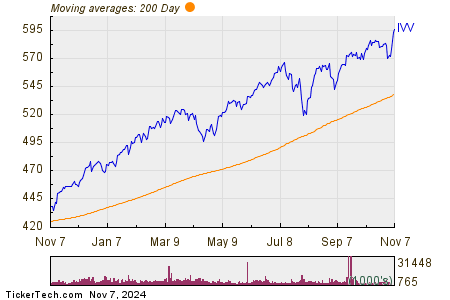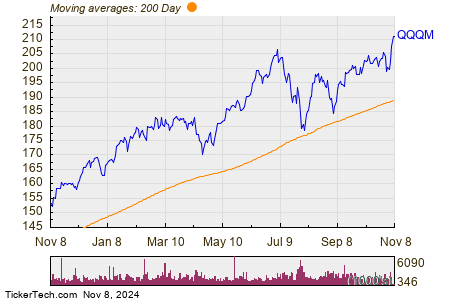As someone who closely follows the fashion industry, I've seen trends come and go, but there's one brand that defies expectations and breaks the stereotype of being a fleeting fad – Crocs.
Their remarkable turnaround has caught my attention. Under the leadership of Andrew Rees, Crocs has transformed from the brink of bankruptcy to becoming a market leader with impressive operating margins.
Rees implemented an extraordinary strategy, cutting costs, focusing on digital sales, and targeting Gen Z consumers. By staying committed to their recognizable products and embracing pop culture, Crocs has regained relevance.
In this article, we'll explore their journey, strategies, future plans, and potential risks. Join me as we unravel the story behind Crocs' meteoric rise, shattering the fashion fad stereotype.
Key Takeaways
- Crocs has experienced a remarkable turnaround since 2014, with operating margins expanding to nearly 30% in 2021 from 2% in 2017.
- The turnaround story started in 2008 when Crocs faced bankruptcy, but strategies implemented by CEOs John Duerdon, John McCarvel, and Andrew Rees improved profitability and focused on recognizable Crocs products.
- Crocs regained relevance by focusing on their iconic clog and targeting Gen Z, using social media and celebrity collaborations to return to the forefront of pop culture.
- Crocs' growth strategy includes diversifying its product offerings through acquisitions like HeyDude, expanding digital sales, focusing on the Asian market, and leveraging Jibbitz.
Appointment of Andrew Rees as President and CEO
Appointing Andrew Rees as President and CEO marked a pivotal moment in Crocs' remarkable turnaround. Under Rees' leadership, the company experienced unprecedented success. His strategic decisions and bold actions played a crucial role in transforming Crocs from the brink of bankruptcy to a thriving brand.
Rees implemented innovative strategies to improve profitability and focused on recognizable Crocs products. He made tough choices, such as shutting down retail locations and manufacturing facilities, to cut costs and boost margins. By prioritizing digital sales, Rees capitalized on the e-commerce boom and propelled Crocs to new heights. The results speak for themselves – Crocs went from unprofitable to achieving best-in-class margins.
Andrew Rees' visionary leadership and turnaround success have solidified Crocs' position as a force to be reckoned with in the fashion industry.
Margin Expansion and Profitability Improvement
Margin expansion and profitability improvement were pivotal in Crocs' remarkable turnaround. The company's focus on increasing its EBIT margin growth and implementing cost-cutting measures played a significant role in its success.
Here are four key factors that contributed to Crocs' margin expansion and profitability improvement:
- Streamlining Operations: Crocs shut down retail locations and manufacturing facilities, allowing them to reduce costs and improve margins. The company also prioritized digital sales, which helped increase efficiency and reach a broader customer base.
- Product Focus: Crocs' CEOs implemented strategies to focus on recognizable Crocs products, such as their iconic clogs. By narrowing their product offerings and eliminating less profitable lines, the company was able to improve profitability and increase margins.
- Efficient Resource Allocation: Crocs eliminated jobs and closed stores to optimize resource allocation. This allowed them to allocate their resources more effectively, further improving their margins and profitability.
- Successful Cost Cutting Measures: Crocs implemented various cost-cutting measures, such as reducing overhead expenses and optimizing supply chain operations. These measures helped the company reduce costs and improve its bottom line.
Relevance Regained Through Iconic Clog and Gen Z Targeting
Through focusing on our iconic clog and targeting Gen Z, Crocs was able to regain relevance in the fashion industry. We recognized the power of social media collaborations and celebrity partnerships in capturing the attention of younger consumers.
By partnering with popular influencers and celebrities, we created a buzz around our brand and generated excitement among Gen Z. These collaborations allowed us to showcase the versatility and style of our iconic clog, proving that it can be fashionable and trendy.
Through strategic social media campaigns and high-profile partnerships, we were able to position Crocs as a must-have item among the younger generation. This approach not only helped us regain relevance but also boosted our revenue and solidified our position as one of the top footwear brands in the market.
Growth Strategy: Heydude, Digital Sales, Sandals, Asia, and Jibbitz
To drive growth, Crocs has strategically focused on expanding through the acquisition of HeyDude, increasing digital sales, expanding their sandals line, targeting the Asian market, and leveraging the popularity of Jibbitz.
- HeyDude acquisition: Crocs' acquisition of HeyDude allows them to diversify their product offerings without diluting their brand. HeyDude has shown rapid growth and strong cash flow, making it a valuable addition to Crocs' portfolio.
- Increasing digital sales: Crocs has prioritized digital sales to reach a wider audience and improve profitability. The shift to online platforms has allowed them to connect with customers in a more convenient and efficient way.
- Expanding their sandals line: By expanding their sandals line, Crocs is capitalizing on the growing demand for comfortable and versatile footwear. This move allows them to cater to different customer preferences and trends.
- Targeting the Asian market: Crocs has recognized the potential for growth in the Asian market and has been actively targeting this region. They've successfully gained traction in countries like China and Japan, where their products have resonated with consumers.
While these growth strategies present exciting opportunities for Crocs, there are also potential risks and challenges to consider. The macroeconomic environment and decreased discretionary spending during a recession can impact consumer behavior and affect Crocs' sales. Additionally, there's a risk of not remaining popular among younger generations and potential increased interest rates on the $2 billion debt following the HeyDude acquisition.
However, Crocs' strong brand recognition, innovative products, and strategic initiatives position them well for continued growth and success.
Valuation and Risks for Crocs' Future Success
Continuing from the previous subtopic, one major factor to consider for Crocs' future success is the valuation and potential risks they may face.
While Crocs has experienced a remarkable turnaround, it's important to assess the risks that could impact their growth trajectory. Macroeconomic risks, such as a recession leading to decreased discretionary spending, could potentially hinder Crocs' revenue growth.
Additionally, the recent acquisition of HeyDude introduces acquisition risks, including the possibility of increased interest rates on the $2 billion debt.
Furthermore, Crocs' success has been attributed to their execution of a turnaround strategy rather than following fashion trends. To ensure sustained success, Crocs must remain popular among younger generations and continue to innovate in a rapidly changing market.
Frequently Asked Questions
What Was the Initial State of Crocs Before the Appointment of Andrew Rees as President and Ceo?
Before Andrew Rees became President and CEO, Crocs was in a struggling state. It faced bankruptcy and had low profitability. Rees's appointment brought about a remarkable turnaround, transforming the brand into a success story.
How Did Andrew Rees Implement Strategies to Improve Profitability and Focus on Recognizable Crocs Products?
Andrew Rees implemented improvement strategies to boost profitability and shift focus towards recognizable Crocs products. By shutting down stores, cutting costs, and prioritizing digital sales, we turned Crocs from unprofitable to a leader in the industry.
What Role Did Social Media and Celebrity Collaborations Play in Crocs Regaining Relevance?
Social media and celebrity collaborations played a crucial role in Crocs regaining relevance. Through viral posts and partnerships with influencers, they captured the attention of Gen Z and returned to the forefront of pop culture.
How Does the Heydude Acquisition Contribute to Crocs' Growth Strategy?
The HeyDude acquisition contributes to Crocs' growth strategy by providing collaboration opportunities and market expansion. HeyDude allows Crocs to diversify its product offerings while maintaining its brand, and the rapid growth and strong cash flow of HeyDude have been instrumental in driving Crocs' revenue.
What Are the Potential Risks and Challenges That Crocs May Face in the Future, Considering Its Valuation and the Recent Acquisition of Heydude?
Potential risks and challenges for Crocs include maintaining popularity among younger generations, managing increased interest rates on $2 billion debt from the HeyDude acquisition, and navigating the macroeconomic environment and decreased discretionary spending during a recession.




